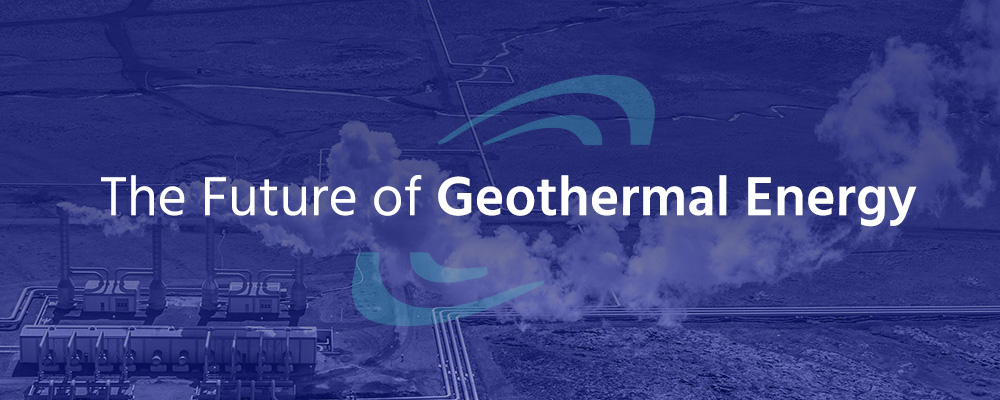

Similar to hydropower and solar power, geothermal energy uses a natural, infinite resource to create power — the Earth’s heat. Geothermal extraction is crucial to achieving a more sustainable future. With a growing focus on the geothermal industry and continued advancement in drilling technology, energy production across the globe will soon see significant changes.
Geothermal energy is the thermal energy from inside the Earth. As radioactive particles from deep underground decay, the temperature rises, creating heat we can extract to create power.
A promising alternative to fossil fuels, geothermal energy produces carbon-free heat that renews as reservoirs naturally recharge with the Earth’s heat. This renewable energy source can also provide consistent, reliable power. Unlike wind and solar power, which are earth-friendly but contingent on the availability of wind and sunlight, geothermal energy can always provide energy through hot water and steam.
To extract geothermal energy, workers drill wells a mile or more below the Earth’s surface. The wells access steam and hot water existing at temperatures of over 200 degrees Celsius, and either draw the water up or create a pathway for it to rise from its own pressure. From there, the water turns into steam, which drives turbines that generate power.
Geothermal energy is most popular in regions of the globe with hydrothermal reservoirs. While most places lack these underground water resources, all locations have hot, dry rocks, which, when water is added, produce electricity-generating steam. These resources, called enhanced geothermal systems (EGS), expand the possibilities for clean energy production through geothermal drilling.
To facilitate energy production, deep geothermal wells access ideal hot rock or water temperatures. Many well systems include a second well to inject used fluids back into the underground reservoirs so they can reheat for future use. The steam from this hot water rotates generator turbines is then used for electricity generation.
This loop concept exists in two forms — open and closed loop geothermal energy wells.
Open loop geothermal systems use direct sources of hot well water to create the steam that powers generators. Water or steam comes up through the pumps and is then pumped back down to its source to be reused.
The two open loop geothermal energy solutions are:
In a closed loop system, a set volume of working fluid circulates in a closed area near a well. When hot water rises from the well, it meets a heat exchanger, which transfers the water’s heat to the working fluid. From there, the working fluid turns into steam.
Binary steam power plants are an example of a closed loop geothermal solution. The binary steam process uses water at a lower temperature than flash steam plants to heat a working fluid, which has a low boiling point. Once the working fluid gets hot enough, it vaporizes, and this steam powers the generator turbines. Meanwhile, the hot water from the wells is injected back into the ground to be reheated and used again.


Globally, many major energy companies are seeking more environmentally friendly methods of obtaining energy. Though the world is still very much reliant on conventional fossil fuels across all industries, including energy production and manufacturing, growing concern over carbon dioxide emissions is forcing the need for alternative solutions to these finite resources.
Interest in geothermal activity is growing and will continue to rise over the next few years. The popularity of geothermal production is already present in the form of increased global drilling activity. Between 2015 and 2020, an average of 180 wells were drilled each year, with that number expected to rise to 500 wells drilled in 2025.
Already, geothermal energy produced over 14,000 megawatts of electrical power in 2020, and energy production is predicted to increase as time goes on.
While geothermal energy is a promising renewable energy source, it also comes with a few obstacles. Geothermal well materials must be able to withstand harsh conditions and continued use. Those investing in the success of geothermal energy are working to find solutions to the following geothermal energy issues:
Geothermal wells are susceptible to corrosion, which damages well pipes and causes friction that can reduce production. Many geothermal reservoir fluids contain high levels of carbon dioxide, which, when dissolved in water, forms carbonic acid. Carbonic acid can corrode steel pipes. Geothermal environments also have high levels of hydrogen sulfide, which induces corrosion, as well.
Corroded pipes move geothermal fluid with more resistance, and the work done to move the fluid against the rough surface is wasted instead of stored as potential energy to be used later. Operators are mitigating corrosion issues by installing corrosion inhibitor treatments to existing wells and building new wells with corrosion-resistant alloy tubular solutions.
Geothermal well quality may decline over time with recent increases in energy use. Many wells that are used frequently are at greater risk of friction-causing corrosion. By improving well longevity, companies can continue to drill and meet their energy production goals.
Mitigating risks of corrosion by utilizing corrosion-resistant nickel pipe and downhole tubular components in geothermal wells is key to well longevity and overall production lifespan.
Specialty corrosion-resistant tubulars can often take months to order and receive through traditional mills. Operators may face lead times of over a year for their materials, making it harder for investors to envision a geothermal future.
When project timelines can’t wait, Corrosion Resistant Alloy’s Just-In-Time mill can provide manufactured, corrosion-resistant tubulars in as little as one week. We specialize in urgent requirements, custom sizes and non-standard mill quantities, giving operators the flexibility to order closer to their need-by date without sacrificing quality or reliability. Our Just-In-Time approach minimizes the risk of costly project delays, ensuring operators have the right product at the right time.
*While every effort has been made to ensure the accuracy of the above review, assessment, conclusions, and report, the appropriateness of their application and their interpretation remain the sole responsibility of the user.
"*" indicates required fields